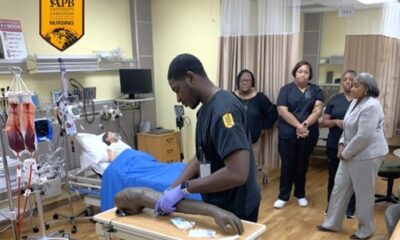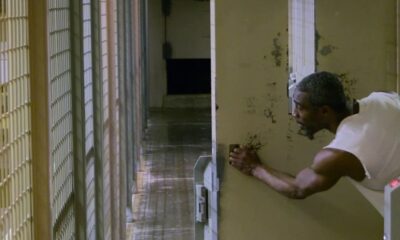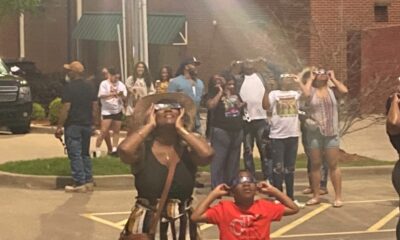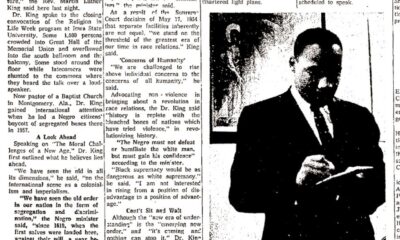Featured
Romare Bearden: The Artist Whose Work Triggered Honest Reflection at the National Civil Rights Museum

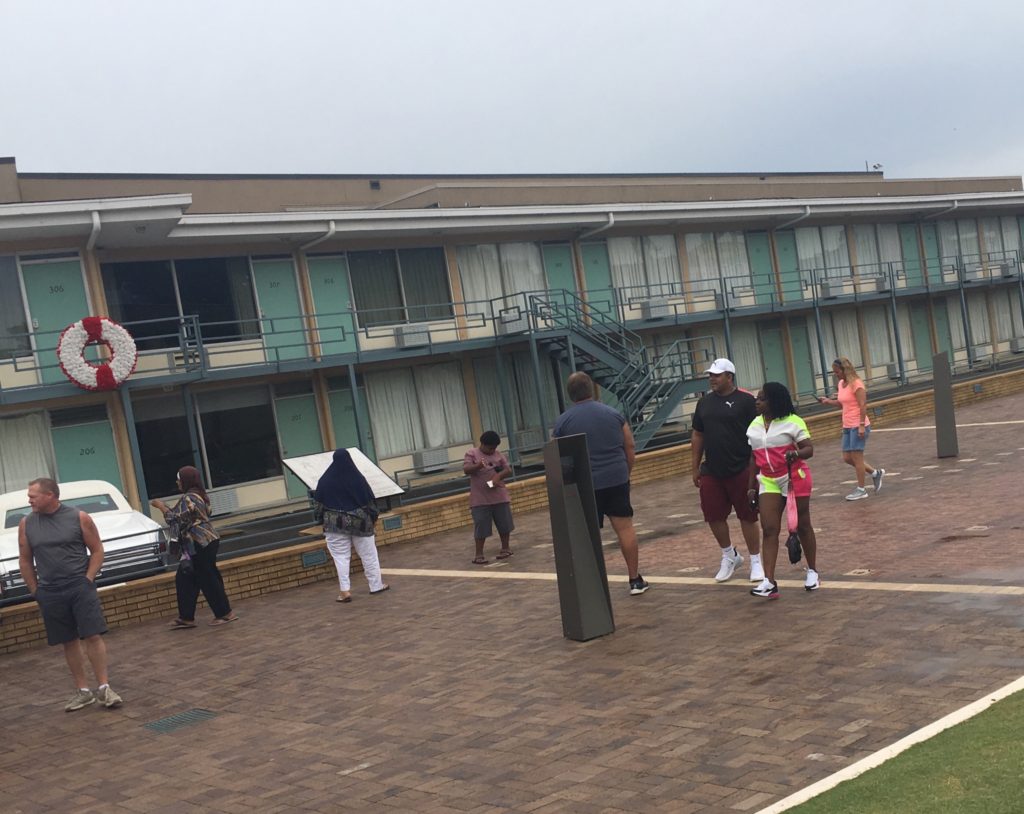
The air hits different at the National Civil Rights Museum in Memphis where the balcony of the Lorraine Motel looks pretty much like it did 51 years when a single gunshot robbed America of its greatest Civil Rights leader, Rev. Dr. Martin Luther King. As visitors reflect on the historical significance of that balcony, they nod at one another in quiet agreement and hopeful solidarity. There is a respectful and silent recognition that this place where a king fell decades ago still holds a key piece of a nation’s future.
“What King was trying to do was probably one of the greatest things since Christ walked the earth,” Rick Cole said as he and his wife, Cynthia toured the Museum. The Chattanooga couple’s visit included the Romare Bearden: Vision and Activism exhibition showing at the Museum through January 6, 2020.
Romare Bearden Celebrated the “Strength and Beauty of Black Culture”
“Typically, what you’re feeling inside is what you’re trying to tell the world…it’s with your art instead of your words,” remarked Cole as she studied Bearden’s work. “I paint…it’s usually something inside your heart and soul that you’re very passionate about and it comes out in what you paint.”
Lithographs, collages, and political cartoons line the walls of the gallery housing the Bearden exhibit. His story as an artist who served in World War II and “agitated for social change” is woven throughout. Bearden’s earliest works were political cartoons he drew in the 1930s for prominent Black newspapers and magazines like the NAACP’s Crisis, The Chicago Defender, and the Baltimore Afro-American.
His commitment to the mission of equality is apparent in a quote attributed to him: “Do everything in your power not just to protest a failed world but to depict one where community responsibility and love are real.”
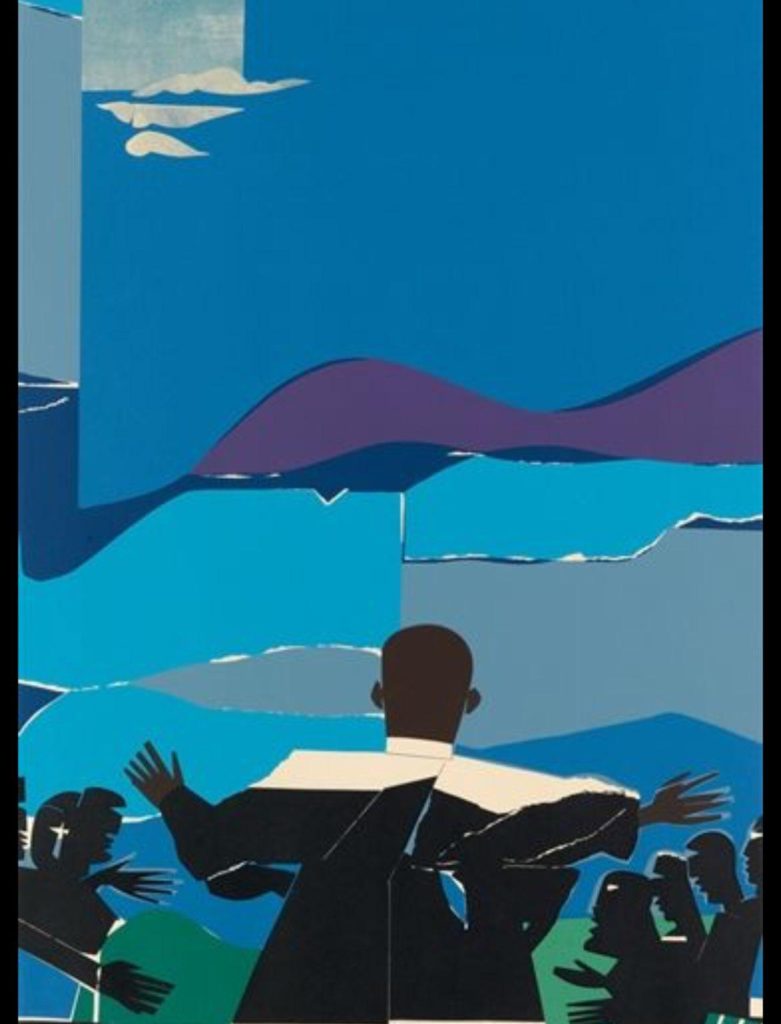
Among the collection is Bearden’s “Mountain Top,” a tribute to Dr. Martin Luther King. It is perfectly at home in the Museum and easily catches the eye.
“I had never heard of him, but I had seen his work,” Rick Cole shared.
Racial Turbulence Through the Eyes of a Little White Boy
Bearden’s themes of racial struggle and concern for the poor led Cole to remember his childhood in Birmingham. He recalled the bombing of the 16th Street Baptist Church that left four young girls dead and 22 others injured. He says he and his family lived five doors down from then-Mayor Albert Boutwell considered a moderate who took office shortly before the bombing and was threatened for his politics.
“I didn’t know prejudice,” he said. “It was taught to me.”
Like many white Americans who grew up during the Civil Rights Movement, Cole’s evolution began with a beloved housekeeper. She rode the bus to his home, and he and his brothers wanted to ride the bus with her.
“We always thought it was the coolest thing to ride the bus,” he explained. “Our parents were going to let the kids ride the bus, and we were going to do it on a Friday. When she arrived, we didn’t know her because she had on her Sunday finest. It was one of the first times she was going to ride at the front of the bus.”
The bus ride took them to downtown Birmingham where Cole’s education on race continued.
“My mom showed us the white and colored water fountains,” he said. “We didn’t know anything about it.”
Fast forward several decades and the little boy from Birmingham had become a businessman who traveled to Philadelphia each week. Cole stared off into the distance as he stood in the middle of a gallery at one of the nation’s premier civil rights museum’s reliving a powerful memory that helped foster his appreciation of race in America.
“I was sitting in first class on a Delta flight,” he recalled. “there were two seats left. We were waiting for a special VIP…a tall man walked onto the plane and then a fabulously dressed woman.”

It was Coretta Scott King . Cole recounted how he and the widow of the man who led the demonstrations in Birmingham and around the country talked about America and its racial history. There were no apologies exchanged that day, but there was understanding…friendship.
America is more than 50 years on the other side of the violence Rick Cole saw in his hometown, and yet he, his wife, and millions of other Americans are deeply concerned about the current divisions in the country and an audacious lack of integrity. Cole’s full-circle moment at the National Civil Rights Movement marks a personal journey, but it simultaneously invites the entire country to reflect, allowing commonalities to trump differences.
With a hint of sadness in his voice, Cole said, “Dr. King would roll over in his grave with what’s going on today.”

-

 Black History5 months ago
Black History5 months agoThe untold story of a Black woman who founded an Alabama hospital during Jim Crow
-

 Featured9 months ago
Featured9 months ago‘No Closure’ In Town Where Five Black Residents Were Either Murdered, Died Suspiciously Or Are Missing
-

 Black History10 months ago
Black History10 months agoBlack History Lost and Found: New Research Pieces Together the Life of Prominent Texas Surgeon and Activist
-

 Featured9 months ago
Featured9 months agoFounder of “The Folding Chair” Podcast Calls Montgomery’s Brawl ‘Karma’
-

 Featured9 months ago
Featured9 months agoThousands ‘Live Their Dream’ During National Black Business Month
-

 Featured11 months ago
Featured11 months agoJuneteenth And ‘246 Years Of Free Labor’ Are Key To Conversations About Reparations


